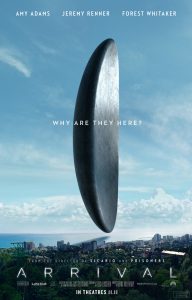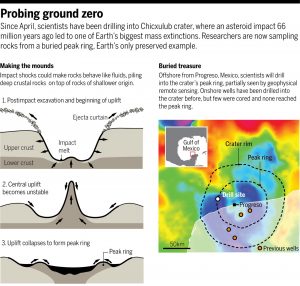I have a big problem with this Movie! The alien visitors are not only smart enough to span interstellar space and come to Earth they are smart enough to have a deeper understanding of time than we do. And when they arrive on Earth they know that we are a divided species, they seem to know something of our physiology and technology. Yet somehow they haven’t managed to learn English or any other Earth language, nor do they manage to do so by the end of the movie. Seriously, at the film’s climax Amy Adams is trying to get the big message across to them using their language!
I had the same problem with Close Encounters of the Third Kind back in 1977, I know that’s almost heresy but it’s true. In CE3K the aliens have been watching us since at least Dec1945 when they abducted Navy flight 19 but in the next 32 years they haven’t learned English! I’m sorry but that really ruined CE3K for me and it pretty much ruins Arrival.
I remember the old 1950 Film “The Day the Earth Stood Still” where at the beginning of the movie the Alien Klaatu walks out of his flying saucer speaking perfect English. He explains this by announcing that “they” have been listening in on our radio and TV broadcasts. Which is probably how any aliens would learn about our existence in the first place.

Arrival’s best part is in fact where Amy Adams learns the aliens written language where every word is based on a circle (see example below). They state in the film that this makes every word a palindrome, a word that is spelled the same backwards and forwards, but if you look at the example that’s not true, the alien symbol is different depending on whether you go around the circle clockwise or counter-clockwise.

As to the Aliens of Arrival themselves, they aren’t very interesting. They look pretty much like octopuses that have lost one tentacle and we don’t get to see a great deal of their technology. The film is really more about how we humans react to the arrival of aliens than the aliens themselves. In that case however “Arrival” spends too much time with Amy Adams and Jeremy Renner and we only get snippets of news reports on how humanity as a whole is reacting.
Serious Science Fiction movies are rare and need to be supported but I just can’t give it my wholehearted approval. It’s not bad, it’s just not very alien. The scriptwriters needed to spend more time on the aliens and not just their language. Well, that’s my opinion, what’s yours?

